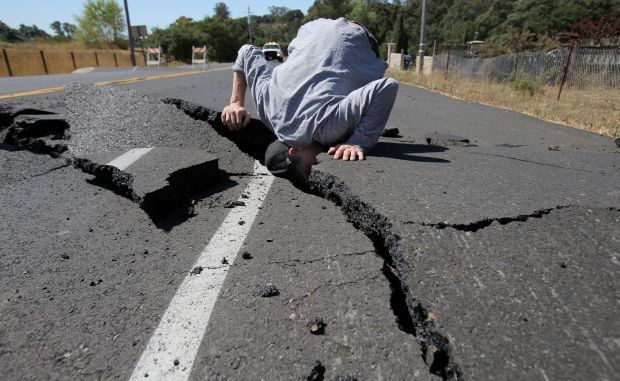
A change to the planet is taking place in super slo-mo. As glaciers melt and lakes dry out, bigger and more frequent earthquakes are occurring.
This has been in process since the end of the last great ice age 11,000 years ago. A thick sheet of ice two miles deep in places covered almost the whole planet then which stretched almost to the Equator, the middle of the planet furthest from the Poles. Much of that ice melted into the oceans, causing sea levels to rise 15o feet.
That glacially-slow process has accelerated exponentially during the last 30 years as trillions of tons of ice from glaciers and water from once gigantic bodies of water like Lake Victoria in Kenya, Lake Athabasca in Canada and huge inland seas across western Russia have all but disappeared in the last few decades.

BYPASS THE CENSORS
Sign up to get unfiltered news delivered straight to your inbox.
You can unsubscribe any time. By subscribing you agree to our Terms of Use
Climate change being man-made, incredibly, is still disputed by many. Of course we can’t be solely responsible as we only produce a tiny amount (3%) of the warming gases produced by the earth every year but it is still very significant. Sean Hannity, on Fox News, loves to say climate change is a hoax but any six year old could easily explain why it isn’t.
We have been in an earthquake “spike” for a decade now which is showing no sign of abating.
The recent series of earthquakes in Nepal are a typical indicator of the trend. Nepal sits on the Eurasian fault line and borders Pakistan which suffered a similar calamity in 2005 which killed at least 65,000 people.
California must expect a similar event soon as it is surrounded by mountains which have rapidly lost their ice as well as water levels dropping in all of its reservoirs like the Hoover dam and Lake Shasta.
Isostatic sea level change is the result of an increase or decrease in the height of the land. When the height of the land increases, the sea level falls and when the height of the land decreases the sea level rises.
During an ice age, isostatic change is caused by the build up of ice on the land. As water is stored on the land in glaciers, the weight of the land increases and the land sinks slightly, causing the sea level to rise slightly. This is referred to as compression. When the ice melts at the end of an ice age, the land begins to rise up again and the sea level falls. This is referred to decompression or isostatic rebound. Isostatic rebound takes place incredibly slowly and to this day, isostatic rebounding is still taking place from the last ice age.
Isostatic sea level change can also be caused by tectonic uplift by fault lines or depression. As this only takes place along plate boundaries, this sort of isostatic change only happens in certain areas of the world.
To read more click here.
